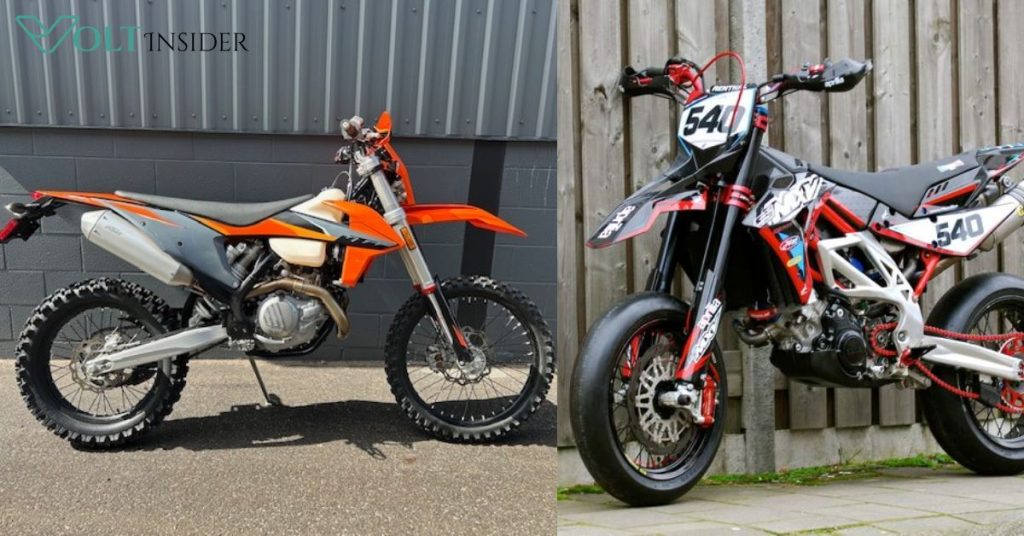Introduction to Dirt Bikes
Dirt biking is more than just a thrilling outdoor hobby — it’s a sport, a passion, and for many, a way of life. A dirt bike is a lightweight motorcycle designed for off-road riding, capable of handling rugged terrain, steep climbs, and muddy trails. From trail riding in the woods to competitive motocross races, dirt bikes open up a world of adventure for riders of all ages.
Unlike traditional motorcycles meant for pavement, dirt bikes are built with long-travel suspension, knobby tires, and lightweight frames that make them ideal for uneven and unpredictable surfaces. Whether you’re a beginner looking for your first bike or a seasoned enthusiast ready to upgrade, understanding the basics is essential for making informed choices and enjoying safe, fun rides.
The popularity of dirt biking has surged in recent years, partly due to its growing presence on social media and YouTube, where off-road enthusiasts showcase epic jumps, trail rides, and bike builds. However, getting started can be intimidating if you don’t know what to look for. This guide is here to break it all down, from bike selection to gear and maintenance.
Choosing the Right Dirt Bike for Your Skill Level
Selecting the appropriate dirt bike is crucial for both safety and enjoyment, especially for beginners. Starting with a bike that matches your skill level ensures a smoother learning curve and reduces the risk of accidents.
Understanding Engine Sizes and Their Implications
Dirt bikes come in various engine sizes, typically measured in cubic centimeters (cc). For beginners, it’s advisable to start with smaller engine sizes to maintain control and build confidence.
- 50cc to 125cc: Ideal for children and young teens. These bikes are lightweight and manageable.
- 125cc to 250cc: Suitable for older teens and adults new to dirt biking. They offer a balance between power and control.
- 250cc and above: Best for experienced riders. These bikes have significant power and require advanced handling skills.
It’s essential to match the bike’s power to your experience level to prevent being overwhelmed by the bike’s capabilities.
Considering Your Physical Attributes
Your height and weight play a significant role in choosing the right dirt bike. A bike that’s too tall or heavy can be challenging to control.
- Seat Height: When seated, you should be able to touch the ground with the balls of your feet. This ensures stability when stopping or maneuvering at low speeds.
- Bike Weight: Ensure you can lift the bike if it falls. Being unable to do so can be problematic, especially when riding alone.
Matching the bike’s dimensions to your body ensures better control and reduces fatigue during rides.
Essential Gear for Safe Riding
Embarking on your dirt biking journey requires more than just enthusiasm; it necessitates the right gear to ensure safety and enhance performance. Proper equipment not only protects you from potential injuries but also boosts confidence, allowing you to focus on honing your skills.
Helmet: The Non-Negotiable
The helmet stands as the most critical piece of gear for any dirt bike rider. It safeguards against head injuries, which can be life-threatening. When selecting a helmet, ensure it meets safety standards like DOT (Department of Transportation) or ECE (Economic Commission for Europe) certifications. A well-fitted helmet should sit snugly without causing discomfort. Features to consider include adequate ventilation, a sturdy chin strap, and compatibility with goggles.
For instance, the Bell Moto-9 Flex is renowned for its advanced impact management and comfort, making it a favorite among riders.
Goggles: Protecting Your Vision
Dirt biking often involves navigating through dusty trails and muddy terrains, making eye protection paramount. Goggles shield your eyes from debris, wind, and UV rays. Opt for goggles with anti-fog lenses, wide peripheral vision, and a comfortable fit with your helmet. Brands like 100% Armega offer goggles with superior clarity and ventilation, enhancing visibility during rides.
Gloves: Grip and Protection
Gloves serve a dual purpose: they provide a firm grip on the handlebars and protect your hands from blisters, abrasions, and the elements. Look for gloves with reinforced palms, breathable materials, and secure closures. The right pair ensures comfort without compromising on protection, allowing for better control and responsiveness.
Boots: Ankle Support and Impact Resistance
Dirt bike boots are designed to protect your feet, ankles, and lower legs from impacts, burns, and twists. They offer reinforced soles, ankle support, and are constructed from durable materials to withstand harsh conditions. Proper boots not only prevent injuries but also enhance bike control, especially during challenging maneuvers.
Body Armor: Chest and Back Protection
Body armor, including chest protectors and back guards, shields vital organs from impacts and flying debris. These protective gears are especially crucial during high-speed rides or on rocky terrains. Modern body armors are lightweight, breathable, and ergonomically designed to allow freedom of movement while ensuring maximum protection.
Knee and Elbow Guards: Joint Safety
Joints are particularly vulnerable during falls or collisions. Knee and elbow guards absorb shocks and prevent hyperextension, reducing the risk of serious injuries. When choosing guards, prioritize those with adjustable straps, comfortable padding, and robust shells for optimal protection.
Riding Jersey and Pants: Comfort and Durability
While they might seem like mere clothing, riding jerseys and pants are engineered for the rigors of dirt biking. Made from durable, breathable materials, they protect against abrasions and provide comfort during long rides. Features like moisture-wicking fabrics, reinforced stitching, and strategic padding make them indispensable for any rider.
Maintenance and Care for Longevity
Proper maintenance is crucial to ensure your dirt bike remains reliable and performs optimally. Regular upkeep not only extends the lifespan of your bike but also enhances safety during rides.
Post-Ride Cleaning
After each ride, especially in muddy or dusty conditions, it’s essential to clean your dirt bike thoroughly. Use a gentle stream of water to remove dirt and debris, paying close attention to the chain, sprockets, and undercarriage. Avoid using high-pressure washers as they can force water into sensitive areas. Once cleaned, dry the bike completely to prevent rust and corrosion. Regular cleaning not only keeps your bike looking good but also allows you to inspect for any potential issues.
Regular Oil Changes
Engine oil lubricates the moving parts of your dirt bike, reducing friction and preventing wear. Depending on your riding frequency and conditions, it’s advisable to change the oil every 10-15 hours of riding or as recommended by the manufacturer. Always use the type of oil specified in your owner’s manual, and don’t forget to replace the oil filter during oil changes to ensure optimal engine performance.
Air Filter Maintenance
The air filter prevents dirt and debris from entering the engine. A clogged or dirty air filter can reduce engine efficiency and increase fuel consumption. Clean the air filter after every ride, especially in dusty conditions. Use a suitable cleaner, allow it to dry completely, and then apply air filter oil before reinstalling. Regular maintenance of the air filter ensures your engine breathes properly and performs at its best.
Chain Care
The chain transfers power from the engine to the wheels. After each ride, inspect the chain for dirt and debris. Clean it using a chain cleaner and brush, then lubricate with a high-quality chain lube. Ensure the chain tension is within the recommended range; a chain that’s too tight or too loose can cause premature wear or even derailment during a ride.
Tire Inspection
Tires are your primary contact with the terrain. Before every ride, check the tire pressure and adjust it according to the manufacturer’s specifications. Inspect the tread for wear and look for any punctures or embedded objects. Proper tire maintenance ensures better traction, handling, and overall safety.
Brake System Check
Brakes are vital for safety. Regularly inspect brake pads for wear and replace them if they’re thin. Check the brake fluid levels and top up if necessary. Ensure there are no leaks in the brake lines and that the brake levers feel firm when applied. A well-maintained brake system provides consistent stopping power, crucial for navigating challenging terrains.
By adhering to these maintenance practices, you ensure that your dirt bike remains in top condition, providing you with a safe and enjoyable riding experience.
Tips for First-Time Off-Road Riders
Embarking on your first off-road dirt biking adventure can be both exhilarating and daunting. To ensure a safe and enjoyable experience, consider the following expert-backed tips:
Master the Basics Before Hitting the Trails
Before venturing into challenging terrains, familiarize yourself with your bike’s controls and handling. Practice in open, flat areas to build confidence in starting, stopping, and maneuvering. This foundational knowledge is crucial for tackling more complex trails.
Adopt the Correct Riding Posture
Maintaining the right body position enhances control and reduces fatigue. Keep your elbows up, knees slightly bent, and stand on the footpegs when navigating rough terrains. This stance allows your body to absorb shocks and maintain balance.
Learn to Use Both Brakes Effectively
Understanding the balance between the front and rear brakes is vital. While the front brake offers more stopping power, overusing it can lead to accidents. Practice using both brakes in various conditions to develop a feel for their responsiveness.
Start Slow and Gradually Increase Speed
It’s tempting to push your limits, but starting slow allows you to understand your bike’s behavior and the terrain. As you gain experience, you can gradually increase your speed and tackle more challenging trails.
Invest in Quality Protective Gear
Safety should be your top priority. Equip yourself with a certified helmet, gloves, boots, and body armor. Quality gear not only protects you from injuries but also boosts confidence during rides.
Souce: Mcreymx / Cardosystems
Join a Riding Group or Take a Training Course
Learning from experienced riders can accelerate your progress. Consider joining local riding groups or enrolling in beginner courses to gain insights, tips, and hands-on experience.
Conclusion: Embracing the Dirt Bike Journey
Embarking on the dirt biking adventure is more than just mastering the throttle; it’s about understanding and respecting the machine beneath you. From selecting the right gear to ensuring meticulous maintenance, every aspect plays a pivotal role in enhancing your riding experience.
By adhering to the tips and guidelines discussed, beginners can build a strong foundation, ensuring safety and enjoyment on every ride. Remember, the journey of dirt biking is continuous learning, and with each ride, you become more attuned to your bike and the trails.
Frequently Asked Questions (FAQs)
- What is the best dirt bike for beginners?
- For beginners, lightweight bikes with manageable power are ideal. Models like the Honda CRF250F or Yamaha TT-R230 are often recommended due to their user-friendly nature.
- How often should I service my dirt bike?
- Regular maintenance is crucial. Basic checks should be done before and after each ride, with comprehensive servicing every 15-20 hours of riding, depending on usage intensity.
- Do I need a license to ride a dirt bike?
- Licensing requirements vary by location. In many areas, riding on private property doesn’t require a license, but public trail riding often does. Always check local regulations.
- Can I ride a dirt bike on the road?
- Standard dirt bikes aren’t street-legal. However, dual-sport bikes are designed for both off-road and on-road use. To ride on public roads, the bike must meet specific legal requirements, including lights, mirrors, and registration.






